Deer in Nara Park mysteriously disappear during this year’s shikadamari season
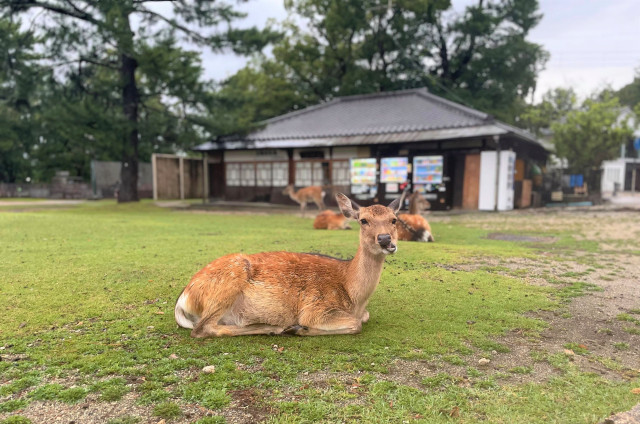
Free-roaming deer continue to baffle visitors and experts with their unusual behaviour.
For the past two years, our Japanese-language reporter K. Masami has been monitoring the free-roaming deer in Nara Park in summer, witnessing a special summer-only gathering phenomenon known as “shikadamari“.
Loosely translating to “deer gathering spot”, shikadamari has been baffling even experts at the Nara Deer Preservation Foundation, who can’t explain why the deer gather on a particular patch of grass at the same hour, and for the same amount of time each day.
The animals congregate on the grass opposite the Nara National Museum inside the park at around 6:30 p.m. and leave shortly after 7:00 p.m. every day during the summer months.
▼ This was the situation in 2019.
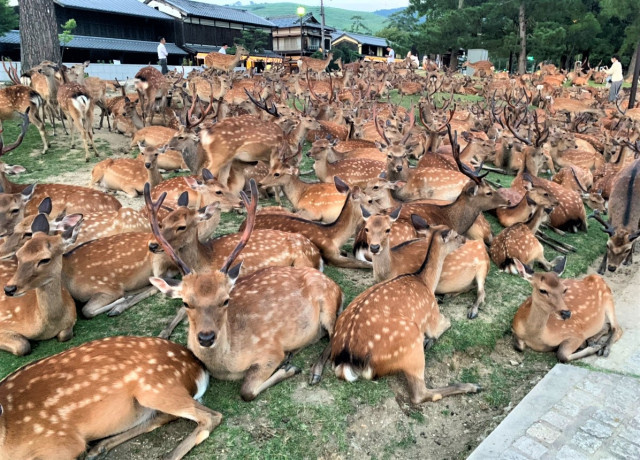
▼ And this was taken at the same spot in 2020.
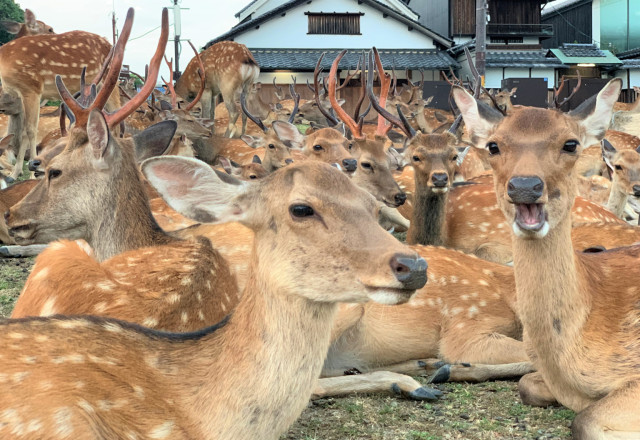
Shikadamari occurs in July and August each year, with the season previously ending on 12 August in 2019 and 17 August in 2020. So what are the deer in Nara Park doing this year?
▼ Our reporter Masami went to find out.

Masami decided to visit the park on 12 August, heading out to the grassy mound near the museum at around 6:00 p.m. to see if this year’s shikadamari season was still in progress. She’d already visited the park in July, and was able to see the deer congregating at the gathering spot like they do every year, so she figured this year would have a similar timeline to previous years.
▼ This photo was taken on 23 July.
▼ However, when she visited on 12 August, this is what she saw.

That’s right — there were zero deer here. This place is usually packed with deer at this time of year, and although she could see some of the animals off in the distance, there were none to be seen on this patch of grass.
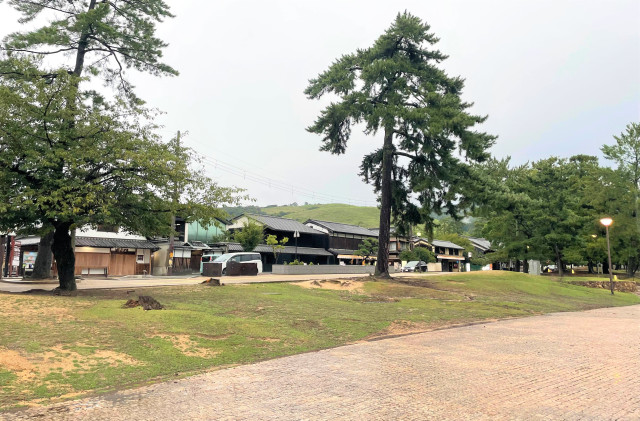
▼ The closest animals were still quite a distance away.
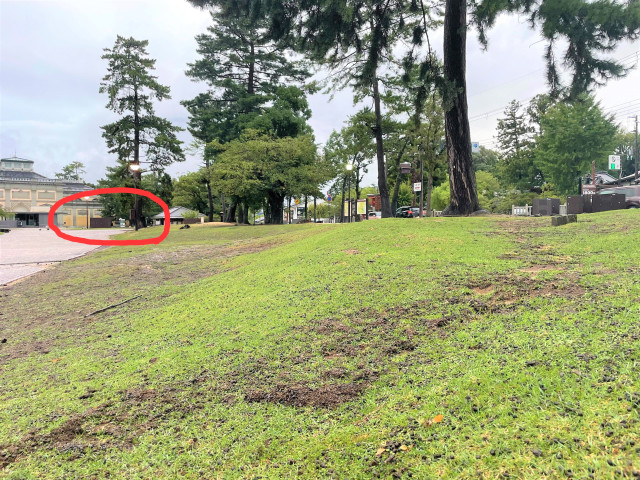
In 2019, Masami counted 623 deer at this spot, while last year, she counted 216. This year, that number had dropped even further, to zero, and despite observing the spot until the sun went down, not one deer ventured into this area.
▼ After waiting for an hour, Masami’s counter continued to read zero.

▼ It’s not as if the deer haven’t been using the area recently, as Masami could see plenty of fresh dung at the gathering spot.

Of course, it was raining on the day Masami visited, and it had been raining a few days beforehand as well, so she figured that might be the reason for the absence of the deer. However, she did see some animals happily munching on grass inside the park, seemingly oblivious to the rain, so she decided to put a call in to the Nara Deer Preservation Foundation, who look after the deer in the park, to see what they had to say about the situation.
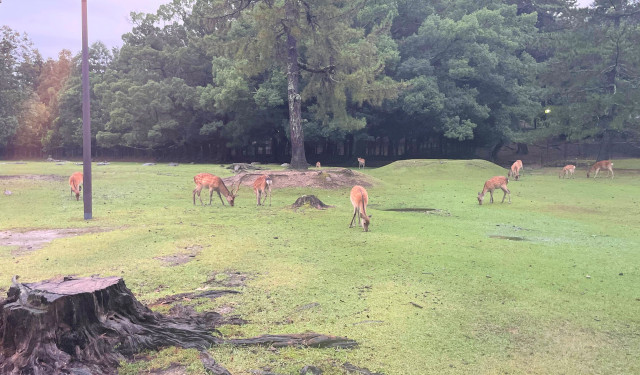
In response to her questions about why the deer weren’t gathering and if it had anything to do with the wet weather conditions, they said:
“Firstly, the reason why the deer gather in that spot is unknown. While some deer don’t mind the rain, we can’t say that they’re not avoiding direct rain. Like humans, when a deer gets wet, their body naturally gets cold. So they might be avoiding places with no trees or eaves to shelter by, but we can’t say for certain.”
So, according to the foundation, rain may not be entirely to blame for the lack of shikadamari this year, but it may be one of the reasons for it. And as she walked around the park, Masami did notice a number of deer sheltering from the rain under the eaves of buildings.
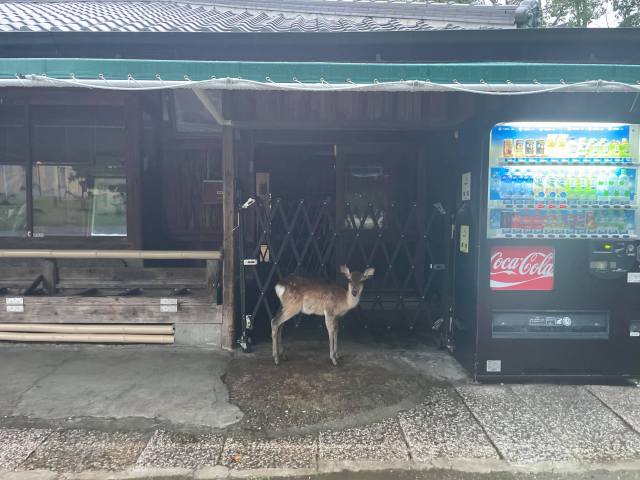
While Masami was unable to get a definitive answer for the animals’ behaviour, she does feel that the deer are sensitive to changes in temperature and climate, and she believes it’s likely that this plays a large part in influencing the timing of their annual gatherings.
After researching the details behind this year’s shikadamari, Masami was surprised to discover that the season appeared to start in May, which is much earlier than usual. Checking the annual temperatures for that month, she found that the highest temperature in Nara Prefecture during May last year was 21.8 degrees, on the 31st. By comparison, this year’s highest May temperature was 28.9 degrees Celsius — 7.1 degrees higher than last year — on the same day in 2021.
Temperatures in June also appeared to be higher than last year, and surprisingly, temperatures this month have dropped dramatically, with lows of 22-24 degrees Celsius this week, which is much cooler than last year.
▼ Deer can be seen sitting around the park right now, although it’s not en masse at their usual gathering spot.

With many believing the deer use their special gathering spot to cool down during summer, it does appear that we may soon be able to predict whether it will be a hot or long summer by observing the animals’ behaviour in future.
While the Foundation is yet to conduct any real research into the shikadamari phenomenon, our reporter Masami aims to learn as much as she can about it through repeated observations. Because much has been written about the animals freely roaming the streets and bowing to tourists in Nara Park in return for senbei rice crackers, but the literature is sorely lacking in their secret powers of perception and congregation, which continue to puzzle everyone year after year!
Photos © SoraNews24
● Want to hear about SoraNews24’s latest articles as soon as they’re published? Follow us on Facebook and Twitter!
Credit:

0 comments:
Post a Comment